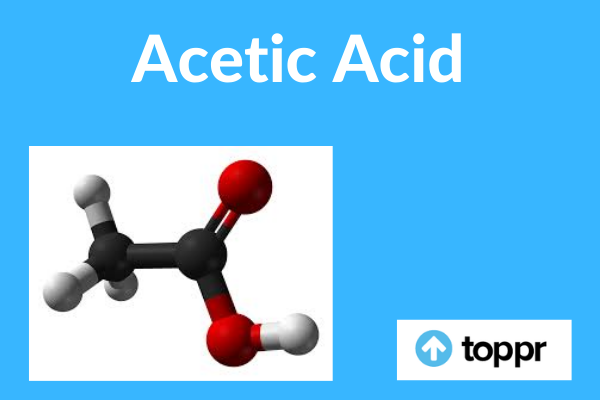Blog
What’s the Difference Between Glacial Acetic Acid and Aqueous Acetic Acid?
What’s the Difference Between Glacial Acetic Acid and Aqueous Acetic Acid?
When comparing chemicals, a common question arises: what’s the difference between glacial acetic acid and aqueous acetic acid? Both are forms of acetic acid, a compound widely used in laboratories, industries, and households. However, the two forms differ significantly in concentration, usage, and properties. In this article, we will dive deep into what sets glacial acetic acid apart from aqueous acetic acid, and why understanding these differences is crucial for safe and effective use.
Acetic Acid Structure: Detailed Explanation and Key Insights
1. What is Glacial Acetic Acid?
Glacial acetic acid is the purest form of acetic acid, containing nearly 100% acetic acid with very little water. The term “glacial” refers to its solidification at temperatures below 16.7°C (62°F), where it forms ice-like crystals. Because it is so concentrated, it is more corrosive and reactive than other forms of acetic acid. The high concentration means that it can act as a strong acid in some reactions.
Key Features of Glacial Acetic Acid:
- Contains 99.5% to 100% acetic acid.
- Freezes at 16.7°C, forming ice-like crystals.
- Highly corrosive and requires careful handling.
- Used in industrial processes such as producing acetate fibers, plastics, and synthetic fabrics.

2. What is Aqueous Acetic Acid?
On the other hand, aqueous acetic acid is simply acetic acid diluted with water. The term “aqueous” indicates that the acetic acid is in a water solution. The most common example of aqueous acetic acid is vinegar, which typically contains around 4% to 8% acetic acid mixed with water.
Key Features of Aqueous Acetic Acid:
- Contains a lower concentration of acetic acid (typically 4%-8%).
- Safe for household and food-related uses, such as in vinegar.
- Less corrosive compared to glacial acetic acid.
- Widely used in food preservation, cleaning, and laboratory settings.
3. Chemical Composition: Glacial Acetic Acid vs. Aqueous Acetic Acid
When we explore the chemical composition of these two forms, the difference between glacial acetic acid and aqueous acetic acid becomes more apparent.
Glacial acetic acid is essentially undiluted, consisting of almost 100% CH₃COOH (acetic acid). Due to its lack of water content, it behaves differently in chemical reactions, often acting as a more potent acid.
In contrast, aqueous acetic acid is a mixture where acetic acid is diluted in water, altering its chemical behavior. The addition of water weakens the acid’s strength, making it less aggressive.
Key Chemical Differences:
- Glacial acetic acid: CH₃COOH (nearly 100% acetic acid).
- Aqueous acetic acid: CH₃COOH + H₂O (acetic acid diluted in water).
4. Applications: When to Use Glacial Acetic Acid vs. Aqueous Acetic Acid
One of the major differences between glacial acetic acid and aqueous acetic acid lies in their applications.
Glacial Acetic Acid Applications:
- Industrial purposes, such as the manufacture of chemicals like acetate, cellulose, and synthetic fibers.
- As a solvent in chemical synthesis.
- Used in the production of pharmaceuticals and plastics.
Due to its corrosive nature, glacial acetic acid requires careful handling, and it’s not used in everyday household tasks.
Aqueous Acetic Acid Applications:
- Widely used in the food industry as vinegar.
- Cleaning agent in diluted form.
- Lab reagent for titration and other chemical experiments.
Aqueous acetic acid is far less dangerous and is commonly found in household products. Its diluted nature makes it safe to use in food preparation and for cleaning purposes.
5. Safety Precautions: Glacial vs. Aqueous Acetic Acid
When it comes to safety, it’s essential to recognize the stark difference between glacial acetic acid and aqueous acetic acid.
Handling Glacial Acetic Acid:
- Wear protective gear such as gloves, goggles, and lab coats.
- Work in well-ventilated areas or fume hoods.
- Avoid direct contact with skin, as it can cause severe burns.
Handling Aqueous Acetic Acid:
- Though safer, aqueous acetic acid should still be handled carefully in concentrated forms.
- Avoid ingestion of high concentrations.
- Always keep out of reach of children, especially in food products like vinegar.
Understanding the safety precautions is critical, particularly when dealing with the concentrated form, glacial acetic acid. Always follow guidelines and ensure proper storage to prevent accidents.
6. Which One Should You Use: Glacial or Aqueous Acetic Acid?
Choosing between glacial acetic acid and aqueous acetic acid depends on your intended application. If you are involved in industrial manufacturing, glacial acetic acid may be the right choice due to its high concentration. However, for household or laboratory use, aqueous acetic acid is often sufficient and much safer.
In summary, glacial acetic acid is ideal for industrial and chemical synthesis applications, while aqueous acetic acid is widely used in everyday tasks like cleaning and food preservation.
Conclusion
In conclusion, the difference between glacial acetic acid and aqueous acetic acid lies primarily in their concentration and usage. Glacial acetic acid is the concentrated, highly corrosive form, while aqueous acetic acid is diluted and safer for general use. Whether you’re a student, researcher, or industry professional, knowing which form to use can make all the difference in safety and effectiveness. Always handle these chemicals with care, and choose the appropriate form based on your needs.

